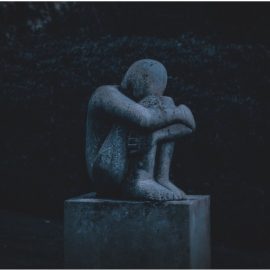

This article is an excerpt from the Shortform book guide to "Radical Acceptance" by Tara Brach. Shortform has the world's best summaries and analyses of books you should be reading.
Like this article? Sign up for a free trial here .
Has somebody hurt you so badly that it feels like you can’t and don’t want to forgive them? Do you feel so much shame about something you did that you can’t forgive yourself? What is Radical Forgiveness?
We can’t hate ourselves into being good people. Only with Radical Forgiveness and Radical Acceptance can we find the wisdom and compassion to correctly respond to our situations. We must learn to forgive even those who have betrayed us because doing bad things doesn’t make someone a bad person.
Continue on to learn about Radical Forgiveness.
Seeing the Goodness in Everyone
When we feel betrayed (like by a cheating spouse, for example) we often lash out in anger. We attack the one who hurt us, and initially put the blame on him or her. However, many of our negative experiences also put us into the trance of unworthiness—we come to think that we’re having problems because there’s something wrong with us. Our outward resentment of that other person then reflects our inner resentment of ourselves—the betrayal confirms our feelings that we’re unworthy of love. We can stop that cycle of resentment with Radical Forgiveness.
Resentment means “feeling again.” Each time we retell ourselves the story of how we were betrayed, we feel the anger of being betrayed all over again. In other words, we repeatedly hurt ourselves by reliving the hurtful experiences.
However, the basic goodness of our being—our Buddha nature—can’t be changed no matter how lost we are in our delusions and narratives. There’s an important difference between doing bad things and being a bad person; that distinction applies both to ourselves and to the people who hurt us.
Recognizing the difference between doing bad things and being a bad person—and therefore seeing the essential good in everyone—is a difficult task. It requires looking past harmful behaviors to see each person’s vulnerability and pain and the Buddha nature beneath all of that. It requires Radical Acceptance.
Learning to Radically Forgive Ourselves
The first step is to recognize the goodness in ourselves. This often begins with forgiving ourselves for how we feel and what we might have done wrong. Forgiveness breaks down the barriers of blame and resentment that we build while trying to protect ourselves from pain. Those barriers are what keep us from experiencing the goodness and love that exists in ourselves and others. Therefore, by giving up on blame and opening our hearts to pain, we can begin to practice Radical Acceptance.
However, there may be times when our guilt and shame are so strong that we can’t forgive ourselves. This is especially the case when we believe that we’ve truly, deeply hurt somebody else. Perhaps we don’t think we deserve forgiveness, or we can’t see the point in it since the damage is already done.
In cases like that, instead of forgiving ourselves, we can try forgiving the shame itself. Rather than fighting the feeling, we can Radically Forgive it for existing and welcome it in, like the Buddha welcoming Mara in for tea. In doing so, we will allow the feeling to pass through us and fade away.
We might then find other feelings buried under the shame, such as fear or anger. We can meet those experiences in the same way: We can welcome them in, sit with them, and Radically Forgive them for existing.
This practice is effective because we’re giving our experiences permission to be what they are. Instead of trying to control our grief, pain, or shame, we simply allow it to exist—to be as big and powerful as it needs to be.
Learning to Radically Forgive ourselves and see our own goodness takes time and practice. As with everything else we’ve discussed, the process starts with mindfulness—we recognize that we’re being judgmental or unkind to ourselves, and we forgive whatever we’re feeling.
Radical Forgiveness Isn’t Condoning
Many people misunderstand this practice at first. They tend to think that accepting and forgiving hurtful behaviors is about letting people (themselves or others) off the hook for the pain they caused. However, forgiving a behavior or a feeling isn’t the same as condoning it—Radical Acceptance isn’t permission to keep doing harmful things. It’s facing past actions with understanding and compassion so that we can have a clear vision of the present and future.
For example, there are stories of death row inmates who faced up honestly to the harm they’d caused and learned to Radically Forgive themselves. By opening up to pain—their own and others’—they awakened compassion within themselves. By doing this, they were able to both take responsibility for the crimes they’d committed and recognize their own innate goodness.
Prisoners who accomplished this were visibly transformed. Guards, relatives, chaplains, and even other inmates all recognized that something had changed—that even though these people were in prison awaiting execution, they’d found a kind of inner freedom.
The main point is this: Holding on to blame and guilt might temporarily stop us from causing more harm, but in the long run it only creates more pain for ourselves and others. We can’t hate ourselves into being good people; only with forgiveness and Radical Acceptance can we find the wisdom and compassion to correctly respond to our situations.

———End of Preview———
Like what you just read? Read the rest of the world's best book summary and analysis of Tara Brach's "Radical Acceptance" at Shortform .
Here's what you'll find in our full Radical Acceptance summary :
- How to live your life fully experiencing everything
- Why you need to let go of judging yourself or your experiences
- How you can acknowledge and welcome any experience






